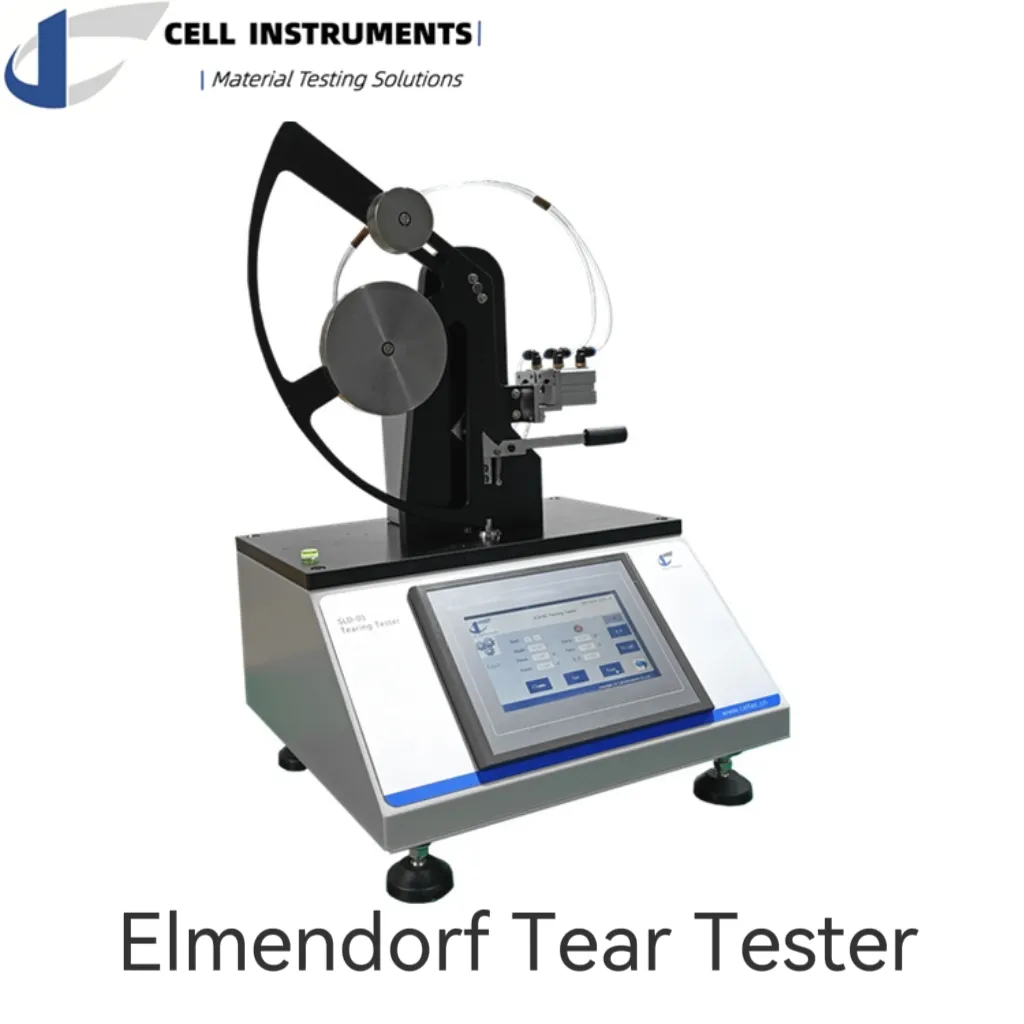Introduction to Tear Strength of Fabric
The tear strength of fabric is a critical parameter in the evaluation of textile durability, especially for applications in packaging, garments, airbags, and industrial textiles. It defines the material’s ability to resist the propagation of a tear once it has started. To accurately measure this characteristic, standardized test methods such as the Elmendorf tear test (ASTM D1424) are commonly employed.
At Cell Instruments, we support industries across packaging, medical, and textiles with advanced material testing solutions, including our SLD-01 Elmendorf Tear Tester, designed for precise and repeatable fabric tear strength testing.
The Importance of Tear Resistance in Fabric Materials
Tear resistance fabric ensures product reliability in real-world handling conditions. Whether in packaging that undergoes shipping stress, or in textiles exposed to mechanical stress and repeated use, fabrics with high tear resistance offer better service life and safety.
The tear and tensile strength of fabric are often used together to assess mechanical performance, but tear strength specifically reflects how well a fabric can contain damage once a tear initiates.
Fabric Tear Tester for Elmendorf Tear Test
A fabric tear tester is a specialized instrument that quantifies the energy required to propagate a tear. The Elmendorf tear tester, such as the SLD-01 from Cell Instruments, uses a pendulum mechanism to apply a consistent force on a pre-slit fabric sample. As the pendulum swings through the sample, it measures the energy absorbed by the fabric in tearing.
This method complies with the ASTM D1424 standard and is suitable for a variety of fabrics, including:
- Woven and non-woven textiles
- Resin-treated or coated materials
- Airbag fabrics
- Paper-based products and technical fabrics
Fabric Tear Strength Test Method and Procedure
The fabric tear strength test method under ASTM D1424 involves the following steps:
- Specimen Preparation: Cut the sample to standardized dimensions and make a slit using a knife or die cutter as specified.
- Conditioning: Prepare the fabric in a controlled environment (21°C ±1°C and 65% ±2% RH) to ensure consistent results.
- Mounting: Place the specimen in the clamps of the Elmendorf tester, ensuring it is centered and taut.
- Testing: Release the pendulum. It swings through the slit specimen and the energy used to tear the fabric is recorded.
- Calculation: Tear force is calculated using scale readings and instrument capacity.
Results are reported in units such as centinewtons (cN) or gram-force (gf), representing the average tearing force across multiple tests per direction (MD and CD).
What is the Test for Tearing Fabric?
This question often arises in quality control contexts. The answer is the Elmendorf tear test, a globally recognized method for determining the tearing test of fabric. It provides quantitative data on how a material behaves when subjected to tearing forces, making it essential for R&D, material comparison, and quality assurance.
Standards and Compliance: ASTM D1424 Explained
The ASTM D1424 standard defines the fabric tear strength standard using a falling pendulum-type apparatus. It ensures reproducibility and comparability of results across laboratories. According to the standard:
- The test measures the tearing force necessary to propagate an existing slit.
- Both machine direction (MD) and cross-machine direction (CD) can be tested.
- The method is suitable for warp direction in warp-knit fabrics but not for weft or most circular-knitted types.
Advantages of Using the SLD-01 Elmendorf Tear Tester
Cell Instruments’ SLD-01 Elmendorf Tear Tester offers several advantages for fabric tear strength test applications:

- Full compliance with ASTM D1424, ISO 1974, and TAPPI T414
- Adjustable pendulum capacity for different material strengths
- Digital force display for accurate data collection
- Multiple clamps and fixtures for various materials including plastic films, textiles, and paper
Our equipment is widely used by quality inspection agencies, textile labs, and industrial packaging manufacturers, ensuring accurate control over material performance.
Conclusion: Ensuring Textile Reliability Through Tear Testing
Understanding the tear tensile strength fabric is crucial in industries where material integrity impacts product performance and safety. With standardized methods like the Elmendorf tear test, professionals can make informed decisions about material selection, design, and quality assurance.
If you’re looking for a reliable and accurate way to conduct fabric tear testing, the SLD-01 Elmendorf Tear Tester from Cell Instruments offers the precision, compliance, and versatility required by today’s demanding applications.
